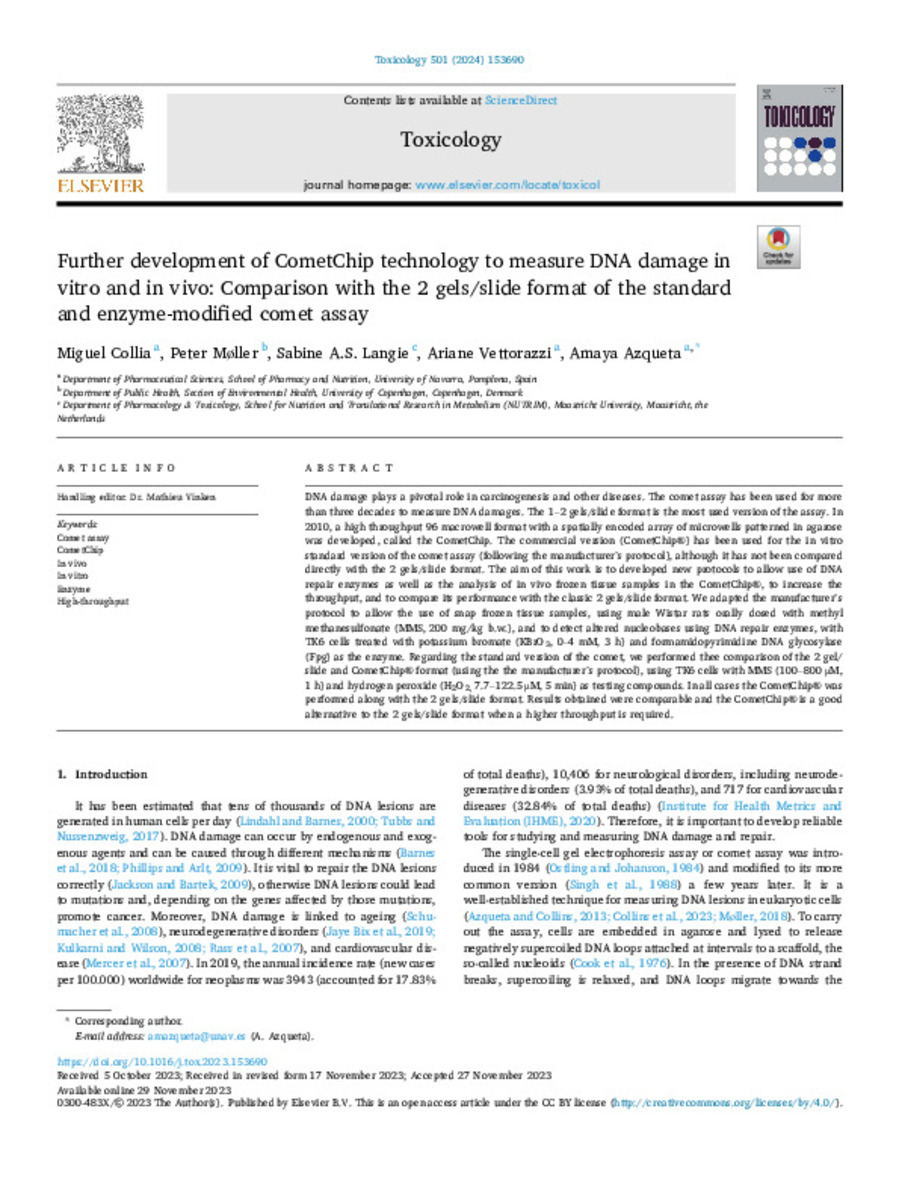Further development of CometChip technology to measure DNA damage in vitro and in vivo: Comparison with the 2 gels/slide format of the standard and enzyme-modified comet assay
Keywords:
Comet assay
CometChip
Enzyme
High-throughput
In vitro
In vivo
Note:
This is an open access article under the CC BY license
Citation:
Collia, M. (Miguel); Möller, P. (Peter); Langie, S.A.S. (Sabine A. S.); et al. "Further development of CometChip technology to measure DNA damage in vitro and in vivo: Comparison with the 2 gels/slide format of the standard and enzyme-modified comet assay". Toxicology. 501, 2024, 153690
Statistics and impact
0 citas en

0 citas en

Items in Dadun are protected by copyright, with all rights reserved, unless otherwise indicated.







